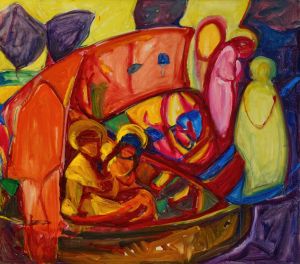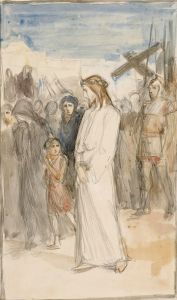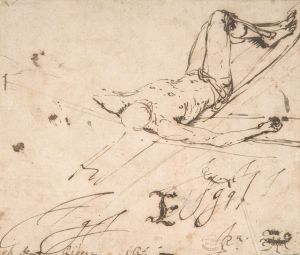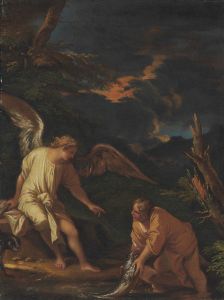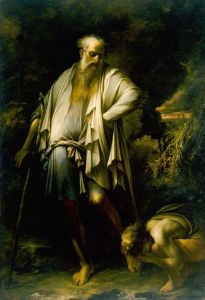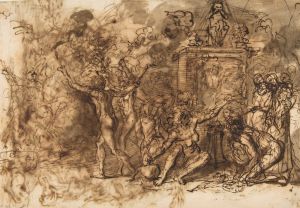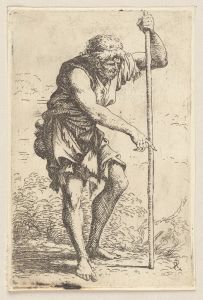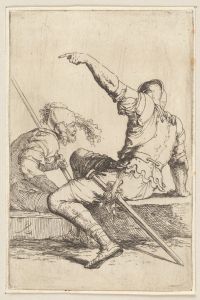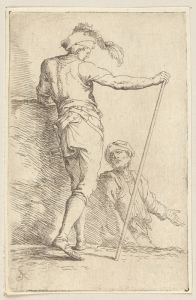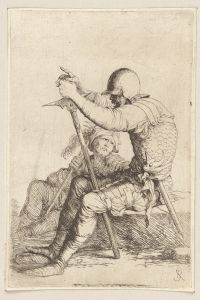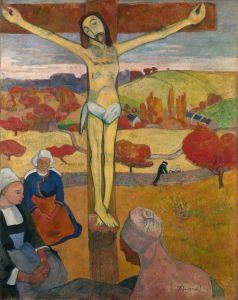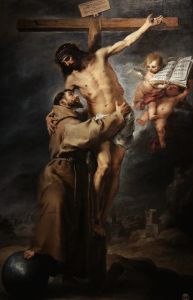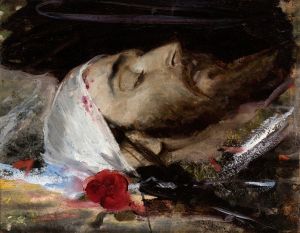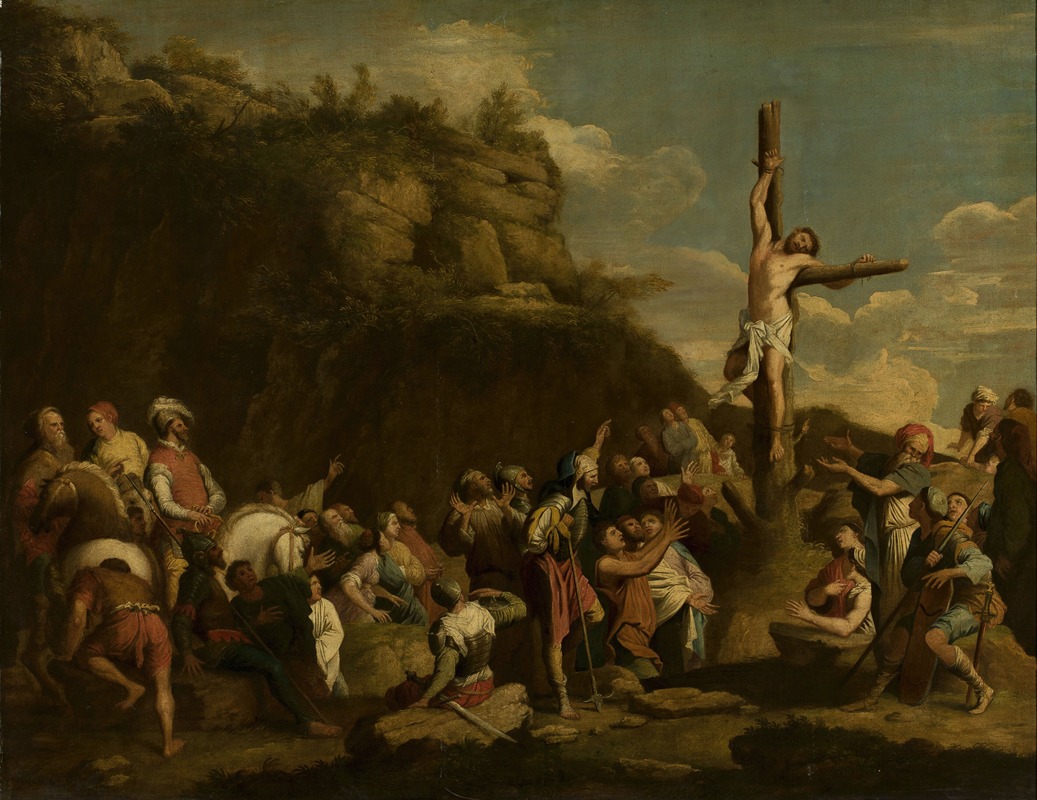
Crucifixion of Polyclitus
A hand-painted replica of Salvator Rosa’s masterpiece Crucifixion of Polyclitus, meticulously crafted by professional artists to capture the true essence of the original. Each piece is created with museum-quality canvas and rare mineral pigments, carefully painted by experienced artists with delicate brushstrokes and rich, layered colors to perfectly recreate the texture of the original artwork. Unlike machine-printed reproductions, this hand-painted version brings the painting to life, infused with the artist’s emotions and skill in every stroke. Whether for personal collection or home decoration, it instantly elevates the artistic atmosphere of any space.
"Crucifixion of Polyclitus" is a painting by the Italian Baroque artist Salvator Rosa, who was known for his dramatic and often unconventional works. Salvator Rosa was born in 1615 in Arenella, near Naples, and he became one of the most versatile artists of his time, excelling not only in painting but also in poetry, acting, and music. His works often reflect his rebellious spirit and his disdain for the artistic conventions of his time.
The painting "Crucifixion of Polyclitus" is one of Rosa's lesser-known works, and it depicts a scene of intense emotion and drama, characteristics typical of Rosa's style. The subject of the painting, Polyclitus, is not a widely recognized figure in historical or mythological texts, which suggests that Rosa may have taken some artistic liberties or drawn from lesser-known sources for his inspiration.
In the painting, Rosa employs a dark and moody palette, with strong contrasts between light and shadow, to heighten the emotional impact of the scene. The composition is dynamic, with the figures arranged in a way that leads the viewer's eye through the painting, creating a sense of movement and tension. The central figure of Polyclitus is depicted in a moment of agony, his body contorted in pain, which is a testament to Rosa's skill in conveying human emotion through his art.
Salvator Rosa's work often included elements of the macabre and the grotesque, and "Crucifixion of Polyclitus" is no exception. The painting's dark themes and dramatic presentation are characteristic of Rosa's oeuvre, which often explored themes of suffering, death, and the supernatural. Rosa's interest in these themes can be seen in many of his other works, such as his series of witchcraft paintings and his depictions of battle scenes.
Despite his talent and the unique qualities of his work, Salvator Rosa did not achieve the same level of fame as some of his contemporaries during his lifetime. However, his work has been increasingly appreciated in the centuries since his death, and he is now recognized as an important figure in the Baroque period. Rosa's influence can be seen in the works of later artists who were drawn to his dramatic style and his willingness to push the boundaries of traditional art.
"Crucifixion of Polyclitus" remains a fascinating example of Rosa's work, showcasing his ability to blend dramatic storytelling with technical skill. The painting is a powerful reminder of the emotional and psychological depth that Rosa brought to his art, making him a distinctive and memorable figure in the history of Baroque painting.





